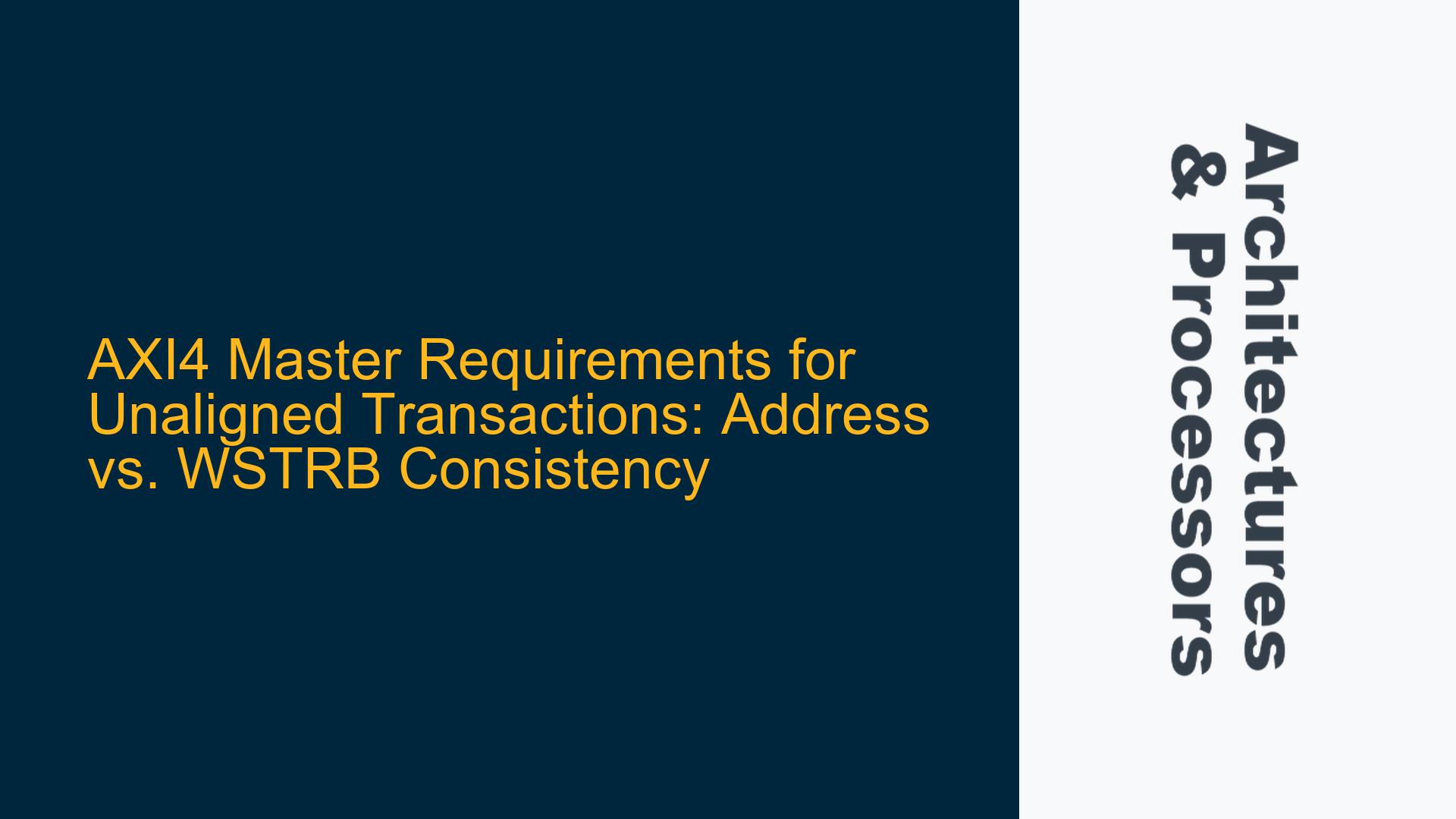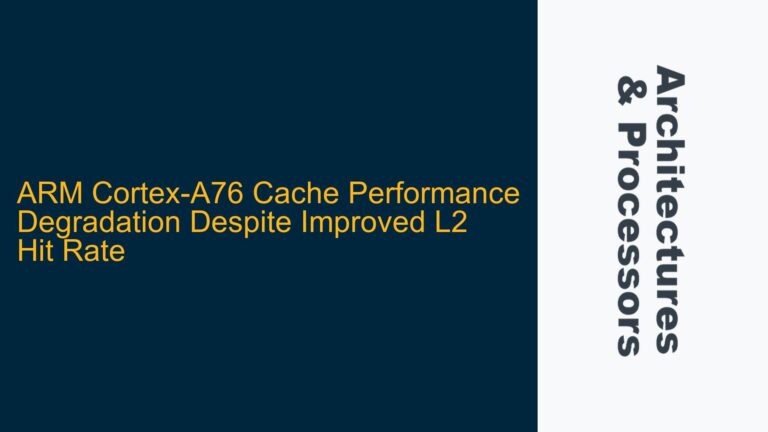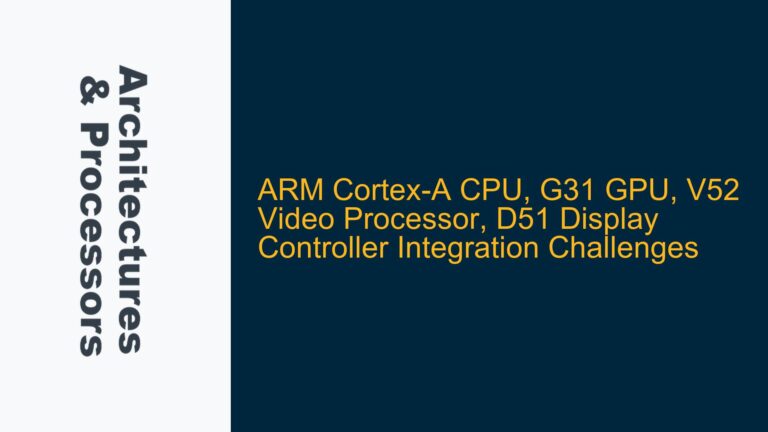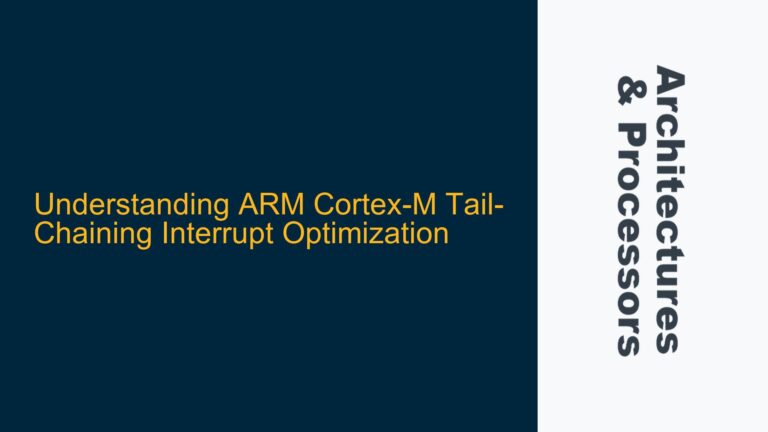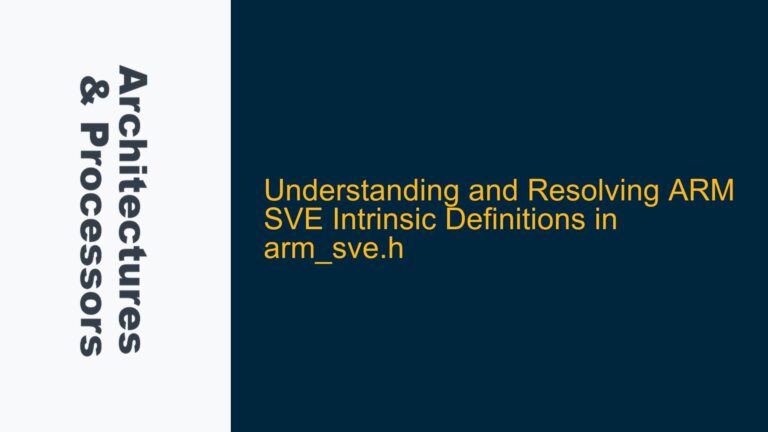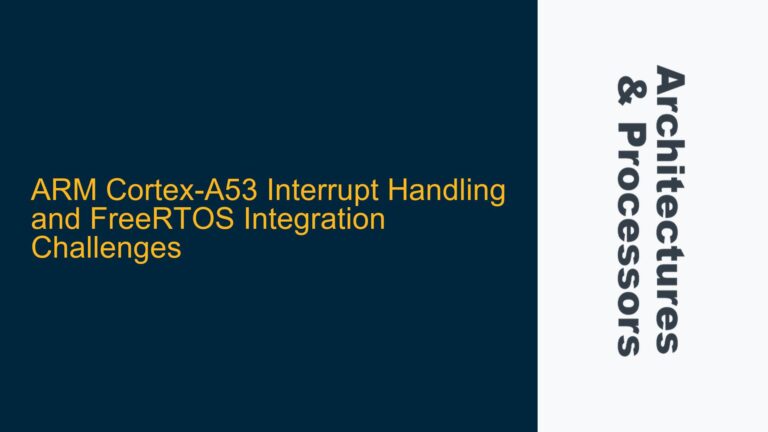AXI4 Unaligned Transfer Confusion: Aligned Address vs. Unaligned Address with WSTRB
The AXI4 protocol provides flexibility for handling unaligned transfers, but the specification’s phrasing regarding the relationship between the address and write strobes (WSTRB) can lead to confusion. Specifically, the protocol states that a master can either use the low-order address lines to signal an unaligned start address or provide an aligned address with appropriate byte lane strobes (WSTRB) to indicate the unaligned start. However, the note in the specification emphasizes that the information on the low-order address lines must be consistent with the information on the byte lane strobes. This raises questions about which combinations of address and WSTRB are valid and how a slave should interpret these signals.
The core issue revolves around whether the slave should rely solely on WSTRB to determine unaligned transfers or if it must also consider the low-order address bits. The confusion stems from the following scenarios:
- Aligned address with low strobes for the first bytes: The address is aligned to the transfer size, but the WSTRB indicates that the transfer starts at an unaligned offset within the data bus width.
- Unaligned address without low strobes for the first bytes: The address itself is unaligned, but the WSTRB does not reflect this, potentially leading to inconsistencies.
- Unaligned address with low strobes for the first bytes: Both the address and WSTRB indicate an unaligned transfer, ensuring consistency.
Understanding the correct interpretation of these scenarios is critical for implementing an AXI4-compliant slave that supports unaligned transfers. Misinterpreting the specification can lead to design flaws, such as incorrect data handling, protocol violations, or functional failures during system integration.
Inconsistent Address and WSTRB Signaling in AXI4 Unaligned Transfers
The ambiguity in the AXI4 specification arises from the interplay between the address and WSTRB signals during unaligned transfers. The protocol allows masters to signal unaligned transfers in two ways:
- Using the low-order address bits: The master provides an unaligned address, and the slave must interpret the low-order bits to determine the starting offset within the data bus width.
- Using WSTRB with an aligned address: The master provides an aligned address but uses WSTRB to indicate the starting offset within the data bus width.
The specification’s note about consistency between the address and WSTRB implies that these two methods should not conflict. However, the lack of explicit examples or clarification in the specification leaves room for interpretation, leading to potential implementation errors.
For example, if a master provides an unaligned address but does not set the corresponding WSTRB bits to reflect the unaligned start, the slave may misinterpret the transfer. Similarly, if the master provides an aligned address but sets WSTRB inconsistently, the slave may fail to handle the transfer correctly. These inconsistencies can cause data corruption, protocol violations, or system-level failures.
The root cause of the confusion lies in the specification’s phrasing, which does not explicitly state whether the address or WSTRB takes precedence in determining the transfer alignment. This ambiguity can lead to different interpretations by designers, resulting in incompatible implementations between masters and slaves.
Resolving AXI4 Unaligned Transfer Ambiguity: Best Practices for Slave Implementation
To address the ambiguity in the AXI4 specification and ensure correct handling of unaligned transfers, the following troubleshooting steps, solutions, and fixes are recommended:
Step 1: Prioritize WSTRB for Unaligned Transfer Detection
The WSTRB signal should be the primary source of information for determining the starting offset of an unaligned transfer. This approach aligns with the specification’s note that the address and WSTRB must be consistent. By prioritizing WSTRB, the slave can handle both cases where the master provides an aligned address with unaligned WSTRB and where the master provides an unaligned address with consistent WSTRB.
For example, if the master provides an aligned address but sets WSTRB to indicate an unaligned start, the slave should use the WSTRB information to determine the starting offset. Similarly, if the master provides an unaligned address and sets WSTRB consistently, the slave should use the WSTRB information to confirm the unaligned start.
Step 2: Validate Address and WSTRB Consistency
The slave should include logic to validate the consistency between the address and WSTRB signals. This validation ensures that the master adheres to the AXI4 protocol requirements and prevents potential data corruption or protocol violations.
For example, if the master provides an unaligned address but does not set the corresponding WSTRB bits, the slave should flag this as a protocol violation. Similarly, if the master provides an aligned address but sets WSTRB inconsistently, the slave should flag this as an error. This validation logic can be implemented using combinatorial checks that compare the low-order address bits with the WSTRB pattern.
Step 3: Implement Robust Error Handling
The slave should include robust error handling mechanisms to manage cases where the address and WSTRB signals are inconsistent. This includes generating appropriate error responses, such as SLVERR or DECERR, to notify the master of protocol violations.
For example, if the slave detects an inconsistency between the address and WSTRB signals, it should assert an error response and discard the transfer. This prevents incorrect data from being written to memory or propagated to other system components.
Step 4: Verify Compliance with AXI4 Protocol
The slave implementation should be thoroughly verified to ensure compliance with the AXI4 protocol. This includes creating test cases that cover all possible combinations of address and WSTRB signals for unaligned transfers.
For example, the verification environment should include test cases for aligned addresses with unaligned WSTRB, unaligned addresses with consistent WSTRB, and unaligned addresses with inconsistent WSTRB. These test cases should verify that the slave correctly handles each scenario and flags any protocol violations.
Step 5: Optimize for Performance and Area
The slave implementation should be optimized for performance and area, considering the additional logic required for WSTRB prioritization and consistency validation. This includes minimizing the latency of the validation logic and reducing the area overhead of the error handling mechanisms.
For example, the validation logic can be implemented using parallel comparators to minimize latency, and the error handling mechanisms can be optimized using shared resources to reduce area overhead.
Summary of Recommendations
The following table summarizes the recommended steps for resolving the AXI4 unaligned transfer ambiguity:
| Step | Description | Implementation Details |
|---|---|---|
| 1 | Prioritize WSTRB for unaligned transfer detection | Use WSTRB as the primary source of information for determining the starting offset. |
| 2 | Validate address and WSTRB consistency | Implement combinatorial checks to compare low-order address bits with WSTRB pattern. |
| 3 | Implement robust error handling | Generate appropriate error responses (SLVERR or DECERR) for protocol violations. |
| 4 | Verify compliance with AXI4 protocol | Create test cases for all combinations of address and WSTRB signals. |
| 5 | Optimize for performance and area | Minimize latency and area overhead of validation and error handling logic. |
By following these steps, designers can ensure that their AXI4 slave implementations correctly handle unaligned transfers and comply with the protocol requirements. This approach minimizes the risk of data corruption, protocol violations, and system-level failures, ensuring robust and reliable operation in ARM-based SoC designs.
